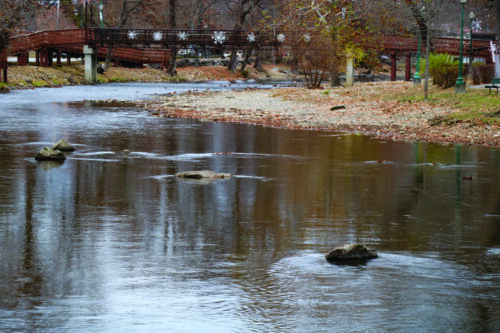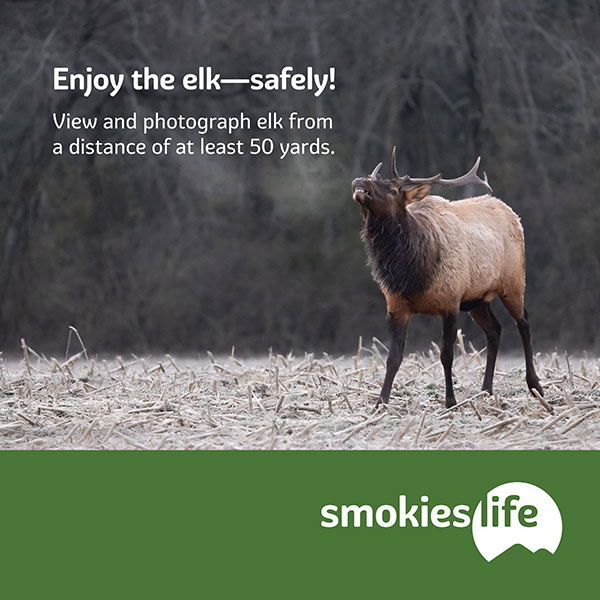By SCOTT MCKIE B.P.
One Feather Asst. Editor
CHEROKEE, N.C. – Water levels are way down in the Oconaluftee River in Cherokee, N.C. – a scene playing out throughout the State of North Carolina due to the worst drought in six years.

As shown in this photo taken on the morning of Friday, Nov. 17, water levels are way down in the Oconaluftee River in Cherokee, N.C. – a scene playing out throughout the State of North Carolina due to the worst drought in six years. (SCOTT MCKIE B.P./One Feather photo)
According to information from the National Integrated Drought Information System, 7.5 million North Carolinians are in an area of drought as of Tuesday, Nov. 14. Last month was the tenth driest October on record for North Carolina with total average precipitation of 1.13 in. (down 2.14 from normal).
The North Carolina Drought Management Council (DMAC) issued a notice on Thursday, Nov. 16 that nine counties in the state are now designated as being in the Extreme Drought Category including: Cherokee, Clay, Cleveland, Graham, Henderson, Macon, Polk, Rutherford, and Transylvania. This is the first time since 2017 that so many counties have been in this category.
Klaus Albertin, DMAC chair, said in a statement on Thursday, “The mid- to long-term forecast is still for a wet winter due to the El Nino pattern. Conditions are likely to continue to degrade into early December, however, since we haven’t seen a shift in the weather pattern yet.”
Jackson and Swain counties are in the Severe Drought Category. DMAC reports that 40 counties in the state are in the Moderate Drought Category.
Due to the extremely dry conditions, the Eastern Band of Cherokee Indians has been under a burn ban since Nov. 5. The ban, issued by the EBCI Executive Offices and Cherokee Fire & Rescue, is for all trust lands of the Tribe.
The North Carolina Forest Service issued a burn ban for all of western North Carolina on Nov. 8. At the time, N.C. Agriculture Commissioner Steve Troxler commented, “With the long-range forecast and conditions on the ground showing no improvement, expanding the ban on open burning to additional counties is a necessary precaution. We keen a close eye on weather, fire danger and fuel conditions, especially this time of year. We’re making daily assessments, and the burn ban will be expanded into Piedmont counties and further east if needed.”
The Great Smoky Mountains National Park issued a campfire ban on Nov. 16. The notice states, “Due to continued dry conditions and high fire danger, the National Park Service (NPS) is banning all campfires and charcoal use in Great Smoky Mountains National Park effective immediately. The fire restriction will be in effect until further notice on both the Tennessee and North Carolina sides of the park.”
The notice continued, “The NPS is working with multiple area agencies in response to current and predicted weather and fuel conditions. Visitors should use extra caution recreating on public lands including national parks and national forests in North Carolina and Tennessee when fire danger is increased.”



